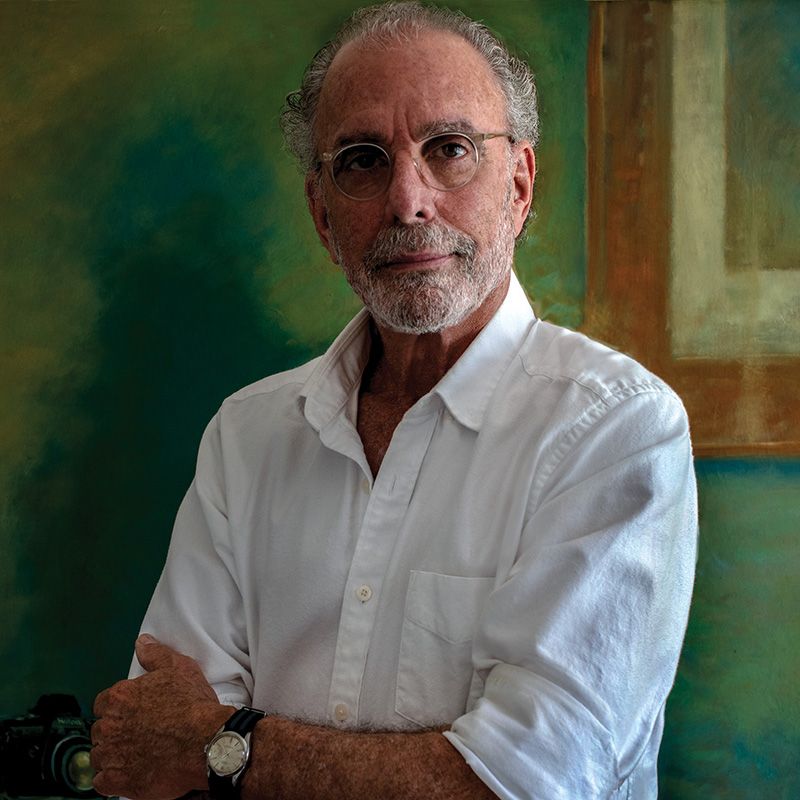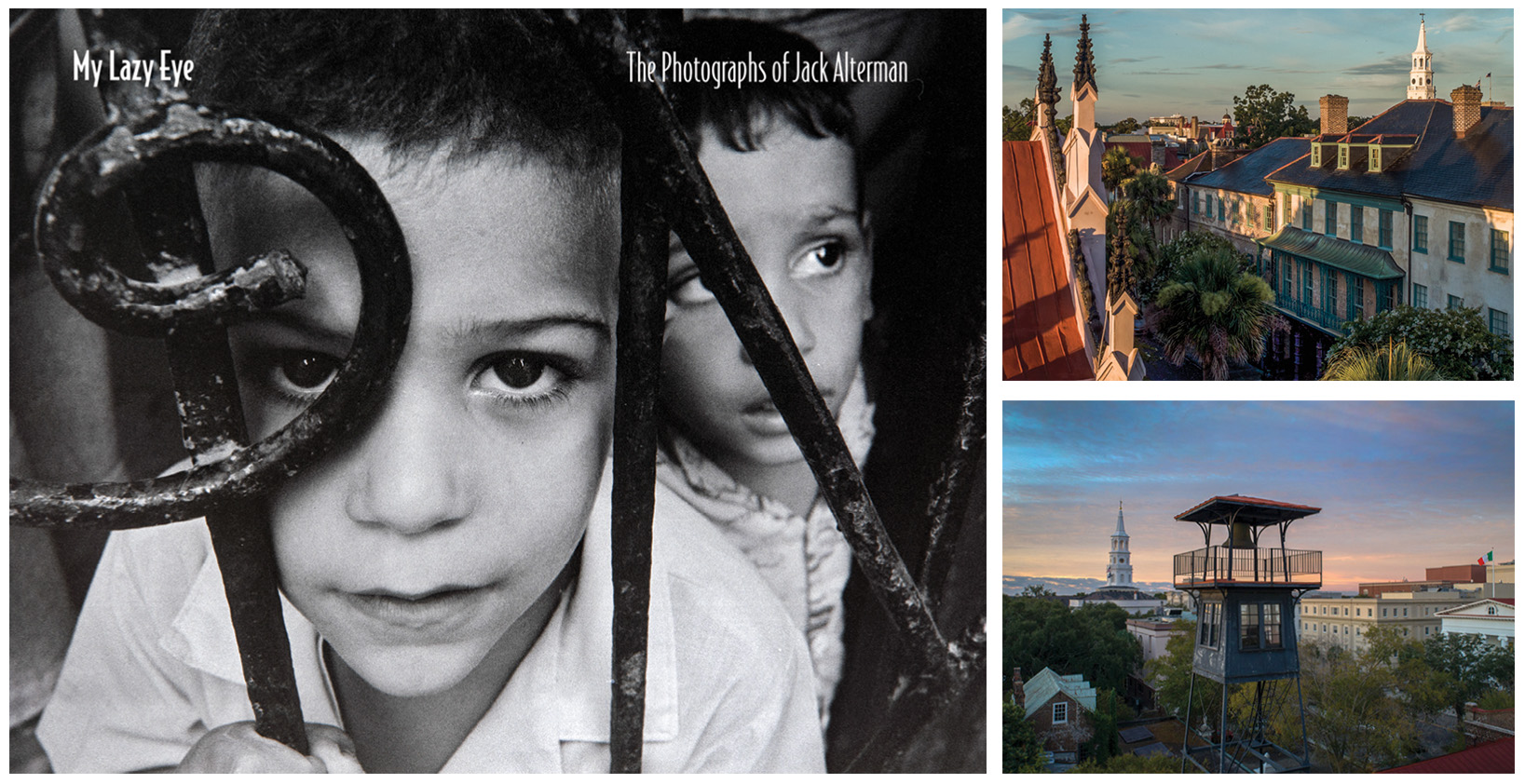The photographer's latest book juxtaposes images from his 40-year career

Photographer Jack Alterman, known for his portraits as well as his signature shots of the Charleston skyline, recently released a book encompassing his career.
Jack Alterman discovered early in his photography career that presenting people and places from a point of view others had never seen before could make a huge impression, and he’s been chasing—and capturing—those images ever since.
A fifth-generation Charlestonian, Alterman developed his skills when he joined the Marines and volunteered for the Stars and Stripes newspaper, where he took what he describes as “grin and grip” photos of soldiers receiving awards, but the credits that appeared alongside his pictures helped motivate him to pursue the craft.
With a financial boost from the GI Bill, Alterman studied at the Brooks Institute of Photography in Santa Barbara, California, in the early 1970s. When he returned to Charleston a decade later, he opened a commercial studio on Meeting Street, earning a reputation as the go-to portrait photographer for the next 35 years. For his artistic exhibits and books, he’s often focused his lens on his hometown, showing its faces and places from a different perspective and revealing their complexities.

(Clockwise from left) Alterman's latest book cover, My Lazy Eye; Alterman often used a bucket truck and drones to shoot unique angles of buildings, such as the Dock Street Theatre and the Meeting Street fire watch tower.
In his latest book, My Lazy Eye (self-published, 2021), he juxtaposes different moments in time across his 40-year career. Here, he looks back on what inspired him.
My Lazy Eye: After high school, I enlisted in the Coast Guard, but after taking the physical exam, they said because of my amblyopia, or “lazy eye,” I wasn’t eligible. “So does that make me ineligible for the draft?” I asked. “No,” the Coast Guard recruiter said, “quite the contrary, the Army will be calling.” Then he introduced me to his friend, a Marine Corps recruiter. “Look, son, we’ll teach you how to use your good eye,” he said. There was something about the way he said that, or maybe the uniform, that made me a believer. A few months later, I was a Marine.
Art for art’s sake: Philip Simmons came into my studio to pose for a photograph endorsing the Charleston Aviation Authority. He was a wonderful man reaching the pinnacle of his career as an artisan blacksmith. He held up a wrought iron piece in front of a white background for the commercial shot, and after the session I asked him if I could do his portrait. I had him stand in front of a dark background. “You know one of my eyes is lazy,” he said, and he held it open with his large gnarly hand. That was the shot I loved the best.
Going up: One day as I was driving down Savannah Highway and saw a white Ford bucket truck on a used-car lot. It was a cable man’s van. “Wow, you mean you can own one of these things!” I thought. I bought it and started driving around the city before sunrise, stopping to go up 30 feet in the bucket and found a whole new perspective on the city. That created a lot of excitement in me, and once that got into my blood, I was driving that truck everywhere creating unique photographs of Charleston.
Cover story: I saw this little boy as I was walking down a street in Havana, Cuba. He grabbed a wrought iron gate and was curiously staring at me. I’ve always loved this photograph, the intensity of it. When I was putting the book together and trying different images for the cover, this one just said, ‘bam.’ The way his eye was focused on me and framed through the wrought iron fence—that big brown eye of his and my lazy eye just came together.
See photographs from Jack Alterman's earlier book, My City Charleston.